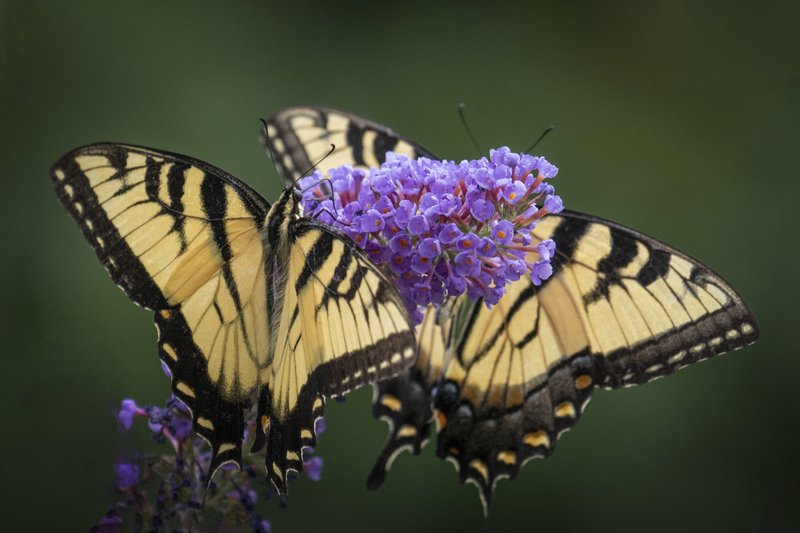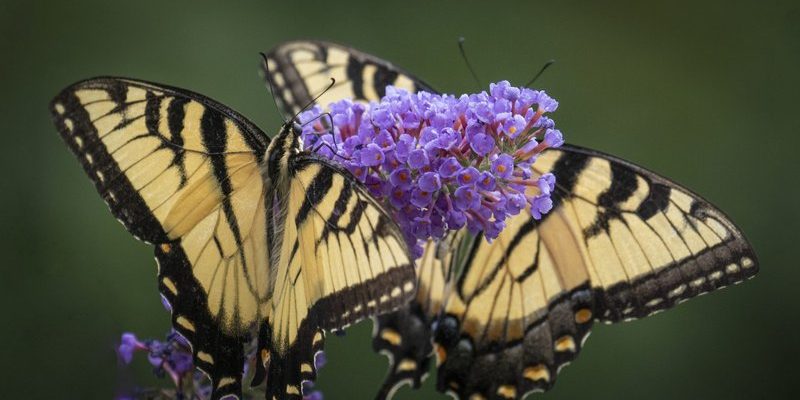
Picture this: butterflies are a bit like tiny diplomats. They don’t just flit around aimlessly—they’re actively sending messages and establishing connections. Their communication methods might not involve words, but they have a rich tapestry of signals, from vibrant colors to specific wing movements. So, let’s dive into how these magical insects talk to each other and navigate their world.
The Role of Color in Butterfly Communication
One of the most striking features of butterflies is their vivid colors. But did you know that these colors serve a crucial purpose beyond their aesthetic appeal? Butterflies often use their coloring to communicate with potential mates and warn predators. For instance, bright colors can signal that a butterfly is toxic or unpalatable, effectively saying, “Hey, don’t eat me!”
In mating rituals, males often display their brightest colors to attract females. It’s like a flashy advertisement for potential partners! In this dance of attraction, the male flutters his wings to showcase his coloration, hoping to impress a female. This visual display is a confidence booster for him and an important signal for her to consider.
Here’s the thing: the environment also plays a role in how we perceive these colors. Different backgrounds can make a butterfly’s colors pop or blend in. So, if you’re trying to spot butterflies in the wild, consider how their surroundings might influence their visibility!
Wing Movements: A Hidden Language
Have you ever noticed a butterfly’s wings moving in a way that almost seems intentional? Well, you’re onto something! Wing movements are another way butterflies communicate. For example, a butterfly may flap its wings rapidly to show off its strength or get attention. It’s like a dance that conveys a message.
Additionally, when butterflies rest, they often hold their wings in specific positions. By spreading their wings wide, they can showcase their colors while basking in the sun. Conversely, folding their wings can help them blend into their surroundings, evading potential threats. It’s a smart strategy—they’re not just pretty; they’re also savvy survivalists.
You might be wondering how butterflies decide when to show off their wings. It’s often influenced by social situations. When a male butterfly spots a potential mate, he might engage in a little wing display to catch her eye. This is all part of their complex social interactions.
Pheromones: The Scent of Attraction
Believe it or not, butterflies can also communicate through smell. Enter pheromones, the chemical signals that many insects (including butterflies) release. These substances are like invisible messages carried through the air, and they play a vital role in mating.
Male butterflies often emit pheromones to attract females from a distance. When a female picks up on these scents, it signals her to come closer. It’s nature’s version of sending a flirty text! Once she arrives, they can assess each other visually before deciding on a dance of courtship.
Interestingly, pheromones aren’t just about romance. They can also signal danger to fellow butterflies. For example, if a butterfly detects a predator, it may release a specific scent to warn others nearby. This cooperative behavior helps the entire group stay safe—talk about teamwork in the animal kingdom!
Sound Signals: The Unheard Communication
While butterflies are more known for their visual signals, they can also communicate using sound, although this is less common. Some species are capable of creating low-frequency sounds through wing vibrations. These sounds can serve various purposes, from warding off rivals to attracting mates.
Imagine a butterfly drumming its wings like a miniature percussionist. While we might not hear these subtle sounds, they play a role in the butterflies’ social interactions. For instance, when two males are vying for the attention of a female, these sound signals might influence the outcome of their competition. It’s like having an unspoken contest in the background of a romantic evening!
Understanding these sound cues adds another layer to butterfly communication. It shows just how intricate their interactions can be, even if we can’t always hear them.
Social Structures and Interactions
Butterflies aren’t solitary creatures; they often thrive within social structures. Some species, like the Monarch butterfly, are known to form large groups during migration, which can create dynamic interactions among individuals. In these gatherings, butterflies communicate using a mix of visual and scent signals, reinforcing social bonds and ensuring a cohesive group movement.
You might notice butterflies engaging in behaviors like chasing or dancing around each other in these social settings. These actions help maintain hierarchy and establish connections within their community. It’s almost like a social gathering where everyone has a role!
These interactions can also foster cooperation. For example, when butterflies migrate, they might signal each other to ensure they fly in sync, making the journey more efficient. Isn’t it fascinating how they seamlessly work together, even when on such a grand adventure?
The Importance of Communication for Survival
Understanding how butterflies communicate isn’t just an interesting trivia fact; it holds importance for their survival. Effective communication helps butterflies find mates, warn each other of danger, and navigate their environment. When they successfully relay messages, they increase their chances of reproduction and longevity.
Moreover, the intricate communication methods contribute to the biodiversity we see today. Different species adapt their communication techniques to survive in various habitats. For instance, butterflies in dense forests might rely more on scent signals, while those in open fields use visual displays more frequently.
In a rapidly changing world, studying butterfly communication can provide insights into environmental health. When we observe changes in their behavior, it can signal shifts in ecosystems, helping us protect these delicate creatures and their habitats.
Final Thoughts on Butterfly Communication
In summary, butterflies are far more than beautiful creatures fluttering about; they are skilled communicators with rich social lives. Through colors, wing movements, pheromones, sound signals, and social interactions, they create a unique language that helps them thrive in their environment.
Next time you see a butterfly, take a moment to appreciate the complexity behind its delicate dance. They’re not just floating through the air—they’re expressing themselves and interacting in ways that we’re just beginning to understand. Isn’t it incredible to think that such small beings can carry such big messages?
Whether you’re a nature enthusiast or simply curious about the world, learning about how butterflies communicate can deepen your appreciation for these remarkable insects. So, the next time you find yourself in a garden, keep an eye out for those fluttering friends—they might just be sharing a secret or two!

